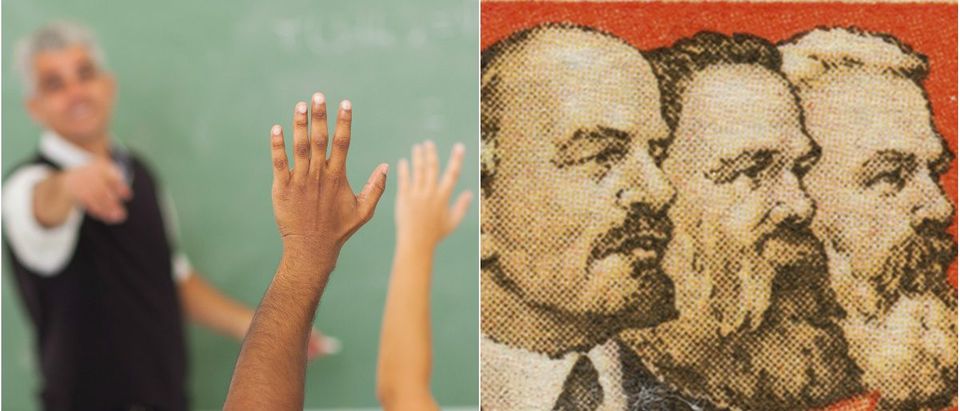Classrooms in elite colleges across the United States are performing what’s known as “progressive stacking,” an affirmative action-like system that privileges individuals based on their race, gender, and sexual orientation. White men are at the bottom of the stack.
Controversy erupted in October at the University of Pennsylvania after teaching assistant Stephanie McKellop expressed on social media that she deliberately called on white male students as a last resort.
A review by The College Fix of online documentation today shows that McKellop isn’t the only teacher who employs the “progressive stack” within the classroom.
“I will always call on my Black women students first. Other POC get second tier priority. WW come next. And, if I have to, white men,” she wrote on Twitter last month.
After she came under fire for her remarks, many on the progressive left jumped to her defense to accuse her critics of being “Nazis” and “white supremacists.” Her defenders even included journalists like Philly.com’s Helen Ubinas, who argued that the teacher meant well. “[C]onversations are always enriched by greater inclusion, and any teacher who advocates for that gets an A in my book,” she wrote.
McKellop’s comments resurfaced the distinctly leftist concept, which was popularized by Occupy Wall Street.
An article from The Nation highlighted in 2011 how Occupy Wall Street protesters used the method to allow “marginalized” people to speak at events, but it had the effect of silencing white men—who made up the majority of the movement.
The College Fix found a 2014 article by then-UC Berkeley Ph.D candidate Genevieve Painter, who explained how Occupy Wall Street inspired her to use their techniques in her own classroom, including the progressive stack.
A similar 2013 article published in the journal “Radical Teacher” explained how a group of instructors taught an “Occupy Wall Street-inspired” course using the same method. They used their “#occupyyoureducation” course by “calling on those who had not spoken (or rarely spoke), women, queer-identified students, and students of color before we called on regular talkers, white, straight, and/or male students.”
The method led to complaints from students who said it had the effect of silencing white men in the classroom. The article describes how the instructors had a sit-down with their department chair and “took this opportunity to clear up some misconceptions about the class.” Two of the instructors now teach at different universities.
The progressive stack was also employed at a scholarly conference at Ohio State University in 2014, in which the conference instructed “all participants to privilege the voices of those who might easily be marginalized in academic institutions in the U.S.”
In 2015, a Saint Mary’s University professor Jody Haiven argued during a panel on misogyny that women must be allowed to speak ahead of men. She explained that she used the progressive stack in her own classroom.
As with McKellop, many progressive teachers believe that the progressive stack facilitates discussion by enabling otherwise “marginalized” people to speak out in places where they would allegedly be squelched by their more privileged peers (people who are straight, white, or male). But not everyone agrees with the method.
“It’s obvious that universities feel deeply embarrassed when whistle-blowers publicize that progressive stacking is being used in their classrooms; they know that parents, alumni, legislators, and taxpayers can see how discriminatory it is, and will withdraw financial support if it continues,” said University of New Mexico psychology professor Geoffrey Miller to The College Fix.
Writing on his own blog, law professor Jonathan Turley argued that students shouldn’t be a part of some social experiment.
“Most academics strive to maintain an environment where everyone can speak as opposed to stack participation to address social patterns or bias. Each student must be treated equally — not de-prioritized due to his association with a racial or gender group,” he wrote.
“While there are an array of social ills outside of the classroom, we maintain an equality of thought and status as a basic component of high education,” added Turley. “Moreover, our students come to our schools to be treated equally — not to find themselves the ongoing social experiment of people like McKellop.”
Ian Miles Cheong is a journalist and outspoken media critic. You can reach him through social media at @stillgray on Twitter and on Facebook.


